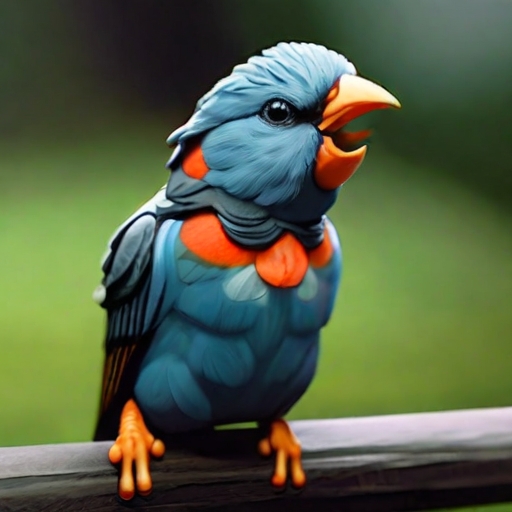The Fascinating Mechanism of Bird Whistling: Exploring Nature's Melodious Musicians
Birds are renowned for their enchanting melodies that fill the air with cheerful tunes. Among the various vocalizations produced by birds, whistling stands out as a remarkable and captivating ability. Whistling birds can create melodic sounds that mimic human whistles, leaving us in awe of their musical prowess. In this article, we will delve into the fascinating mechanism behind how birds whistle

The Syrinx: Nature’s Whistling Instrument:
Unlike humans who use vocal cords to produce sound, birds utilize a unique vocal organ known as the syrinx. The syrinx is located at the base of a bird’s trachea, where it splits into the bronchi leading to the lungs. This specialized structure allows birds to produce a wide range of sounds, including whistles.
Airflow and Sound Production:
To whistle, a bird controls the airflow passing through its syrinx. By modulating the airflow and manipulating the tension of the syringeal muscles, birds can create diverse whistling sounds. The syrinx contains a pair of labia, which are flexible membranes that vibrate when air passes over them. These vibrations produce sound waves that resonate within the bird’s vocal tract, resulting in melodious whistles.
Muscle Control and Song Learning:
Birds that whistle often exhibit remarkable control over their syrinx muscles. They can adjust the tension and position of the labia to produce different pitches and tones. This intricate muscle control allows birds to mimic various sounds, including human whistles, other bird songs, or even environmental sounds.
Furthermore, many birds are capable of learning and imitating complex melodies. Species like the mockingbird and the lyrebird are renowned for their ability to mimic a wide range of sounds, including car alarms, camera shutters, and even musical compositions. These birds possess well-developed auditory learning skills, enabling them to accurately replicate different whistling patterns they encounter in their environment.
Species-Specific Whistles:
It’s important to note that not all birds whistle in the same manner. Different bird species have distinct vocalizations and whistling abilities. For instance, the melodious tunes of canaries are a result of their specialized syrinx and the controlled movements of their vocal apparatus. On the other hand, parrots possess a unique vocal anatomy that allows them to mimic human speech and whistling sounds with astounding accuracy.
Evolutionary Significance:
The ability to whistle has likely evolved in birds for various reasons. Whistling can serve as a form of communication, helping birds attract mates, establish territory, or warn of potential dangers. Additionally, some birds use whistling as a means of identifying members of their own species, as each bird has its own unique vocal signature.
The world of bird whistling is a testament to the wonders of nature’s musical abilities. Through the intricate control of their syrinx and vocal muscles, birds produce enchanting whistling sounds that captivate our senses. From imitating human whistles to mimicking the sounds of their environment, birds have evolved diverse and captivating whistling abilities. The melodic symphonies that birds create serve as a reminder of the beauty and complexity of the natural world. So, the next time you hear a bird whistle, take a moment to appreciate the incredible vocal talents of our feathered friends.

